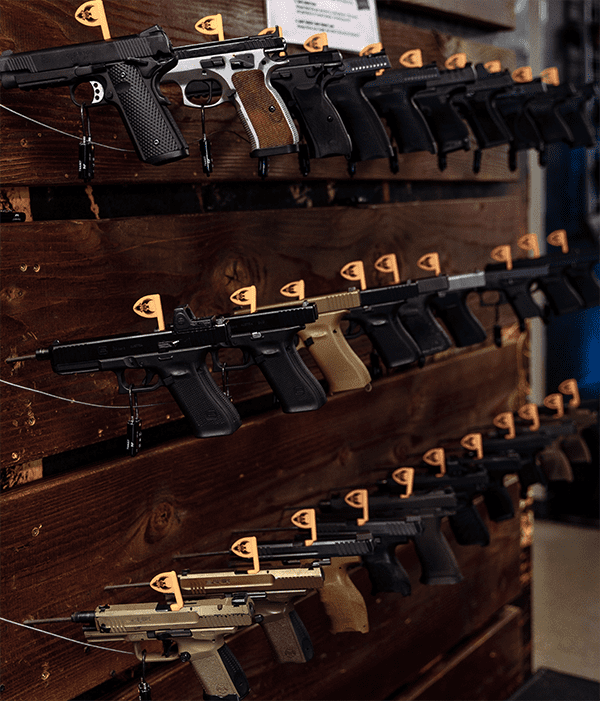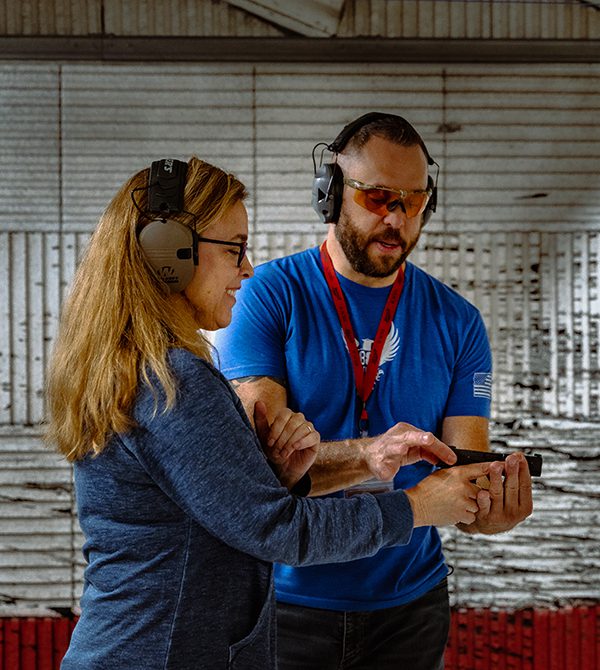In recent years, we have seen a huge increase in the number of new firearm owners. It is exciting to see more people exercising their second amendment rights, however, it can be easy for new firearm owners to get overwhelmed. Here are four common mistakes made by new shooters/gun owners and how to avoid them.
4 Common Mistakes Made by New Shooters
1. Not Seeking Professional Training at the Start
It’s easier to build good habits from the start instead of trying to break bad habits developed over time. Many of our customers have told the staff they need to go to the range to practice before they take a class.
While we understand that learning a new skill can be a little intimidating, seeking out professional help from the beginning is incredibly beneficial—and when we say professional, we mean it literally. While it’s more convenient to learn from a friend or family member, they usually do not have the skills to properly train a new gun owner. Great instructors love introducing a new student to the world of shooting, firearm ownership, and gun safety.
88 Tactical recruits and retains the industry’s most experienced instructors from the special operations military, law enforcement, and fire and rescue – many of whom continue to serve today.
 2. Not Trying Before Buying
2. Not Trying Before Buying
Buying a gun before you have a chance to shoot it is a huge gamble – especially if it is your first gun. It is common for new shooters to buy their first firearm based solely on a recommendation from someone they know. More often than not the new gun owner will end up completely unhappy with the recommendation. What works for someone else may not work for you. To avoid this dilemma, research options, ask around and narrow down your choices to a few firearms.
Once you have your shortlist, go to a range that allows you to rent and try them out before making a decision. Trying out a firearm doesn’t just mean holding it. You need to shoot to get a proper feel for the gun. Taking an Intro to Handgun class before buying your own firearm will help you feel more comfortable and ensure you are properly handling and shooting the firearm.
Questions to ask yourself:
- Can I get a good grip?
- Is it easy to manipulate?
- Do I have a natural point of aim?
Need help finding the right firearm? Request a private lesson with an 88 Tactical instructor for assistance with firearm selection. Customers can test out different handguns from our rental wall.
3. Not Investing in Quality Products
Have you heard the expression, “buy once, cry once”? Regardless of whether you intend to use your firearm for self-defense or competition, you want a gun you can rely on. Not all firearms are created equal. In fact, some come with a lot of issues. The same goes for firearm accessories such as holsters, belts, and safes. Firearms and accessories with low price points can reflect a lack of quality and reliability. For a quality handgun, you can expect to pay anywhere from $500-$700.
If you don’t have cash lying around, it would be better to save up than to purchase a less expensive firearm now and upgrade later. If you feel you need a firearm immediately for home defense, there are some reliable shotgun options such as the Mossberg Maverick 88 for $200-$250.
 4. Not Continuously Practicing
4. Not Continuously Practicing
Shooting is a perishable skill. If you don’t use it, you lose it! Too often, new shooters take a class, buy a new gun, and then don’t touch it again for months at a time. You can’t expect to take one class and expect to be John Wick (unfortunately). Ammo and training classes can be expensive, and it can be challenging to fit range time into your schedule. However, there’s a wonderful thing called dry-fire practice.
Dry fire allows you to train with your firearm without using live ammunition or going to the range. The best shooters in the world spend more time doing dry fire than live fire. It’s a very effective way to become more familiar with your gun and develop your skills. Most modern firearms have no issues with dry fire, so you don’t have to worry about damaging your gun. There are plenty of tools you can incorporate, like dummy rounds or laser cartridges, however, they aren’t necessary for good practice.
Try to work in 10 minutes of dry-fire practice per day, hit the range at least once a month, and take a couple of classes per year. The more you do those three things, the more you will improve.
88 Tactical Membership Benefits
88 Tactical members enjoy awesome benefits like unlimited free range time and discounts on training classes, merchandise and more.
Additional Information: Top 5 Dry Fire Tips


